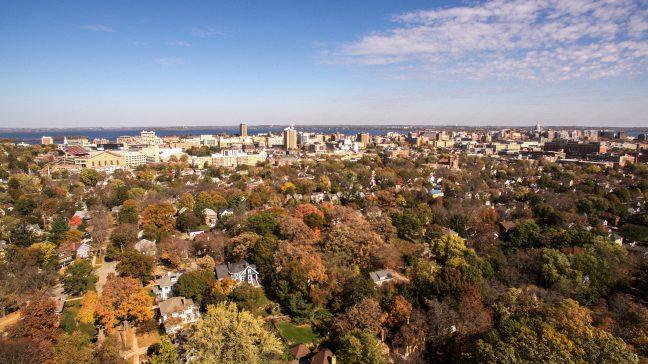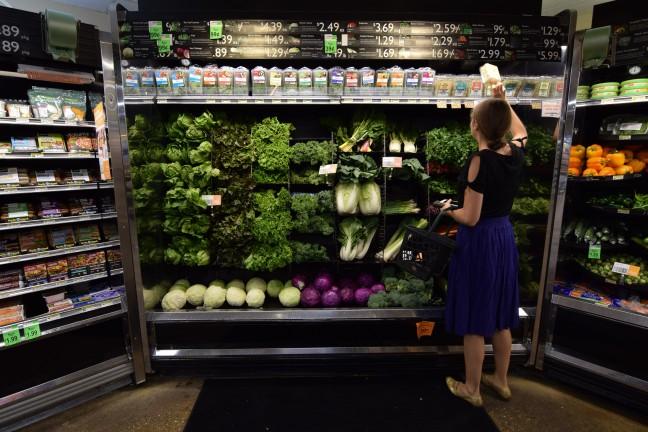Most cars are parked 90 percent of their lives and are driven on average for only 50 minutes a day. This fact alone makes a strong case for implementing car sharing, a service that allows individuals to rent a vehicle for a short time period to travel whenever and wherever without the hassle of paying for gas, maintenance and insurance.
On large college campuses, with congested streets and a population of students who are generally uninterested in owning and maintaining a vehicle, the case is even stronger for a plan that combines car sharing with ride sharing — having more than one person in a vehicle.
At University of Wisconsin, the majority of students are millennials (born 1980-2001), a generation, it seems, that would rather forgo the financial responsibility of owning and maintaining a vehicle and keep their data plan instead. According to a 2012 Edmunds.com report, car sales dropped 30 percent among 18 to 34 year olds between 2007 and 2011.
We could say millennials don’t have the funds or adequate employment to be spending big dollars on a vehicle. But it’s possible millennials are simply less interested in driving. A 2013 AAA Foundation for Traffic Safety study reported just over half of those eligible to obtain their driver’s license before age 18 do so.
Compared to other generations, such as the baby boomers (born 1946-1964), who expressed their freedom through music, fast cars and movies, this new generation is expressing their independence through social channels and developing technology.
If millennials would rather spend their dollars on and express themselves through technology rather than transportation, this generation is an optimal target for car and ride sharing.
The concept of car sharing has been around for decades and is expected to grow by more than $125 billion by 2020. One reason for this is millennials, technologically sophisticated and completely comfortable finding on-time bus schedules and bike-sharing stations, are also comfortable with car sharing. It is not only accessible and convenient, but it saves money and can greatly reduce congestion, accidents, air pollution, loss of life and environmental impact. According to the Economist, one car shared is equal to 15 cars owned.
Currently in Madison there are ride sharing programs. The UW ride share Facebook group is a great example. Car sharing services like Zip Car also exist, but normally only one person uses the car at a time, making it not very effective. Multiple people could ride and split the cost, but it’s just not very well advertised in Madison. Zip Car and the Facebook group exist, but they’re not used enough, especially for a city like Madison.
An estimated 45 percent of the millennial generation, which is the majority age group on the UW campus, agrees they make a conscious effort to take public transportation and reduce how much they drive, while only 24 percent of baby boomers agree. The gap is significant when considering why the millennial generation cares less about fast cars and more about getting the latest iPhone.
The Madison Area Congestion Management Process shows maps of highly congested locations in Madison, including the Beltline and University Avenue, where most students are arriving on or leaving campus. Using public transportation or ride sharing would reduce congestion levels around University Avenue, making it easier — and faster — for UW students to get to and from campus. As a bonus, fewer vehicles on the road would reduce local air pollution and noise.
Madison ranks in the top 30 locations with the highest number of accidents. The No. 1 ranked spot for number of crashes in nonintersection locations was 3700 E. Washington Ave., with 30 per day. The estimated number of vehicles on an average day at that location is 61,850. Madison also ranked University Avenue as 21st out of 30, with the number of crashes at nine and an estimated 54,450 vehicles on an average day.
Ride sharing would reduce the number of vehicles on the road, but it is difficult to conclude how that would change the rate of accidents.
With fewer vehicles on the road, the probability of an accident happening may increase — when roads are less congested, people tend to drive faster. On the other hand, when people are car sharing they may drive more cautiously since they are using a vehicle that is not their own. Students using car sharing services may also have more incentive to use public transportation or walk places.
Expanding existing car sharing businesses to incorporate ride sharing is a viable business plan when serving a population that would rather not spend money on owning a vehicle and that cares considerably about environmental issues.
Mary Chernyaev ([email protected]) is a senior majoring in agriculture and applied economics.





















